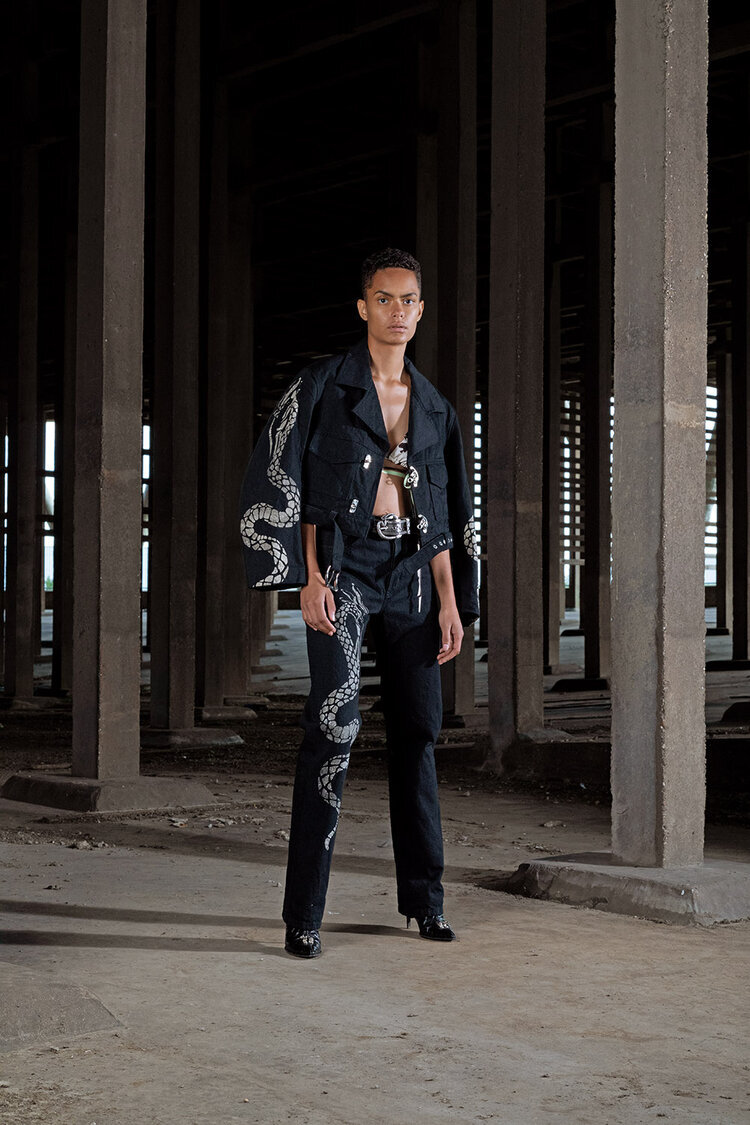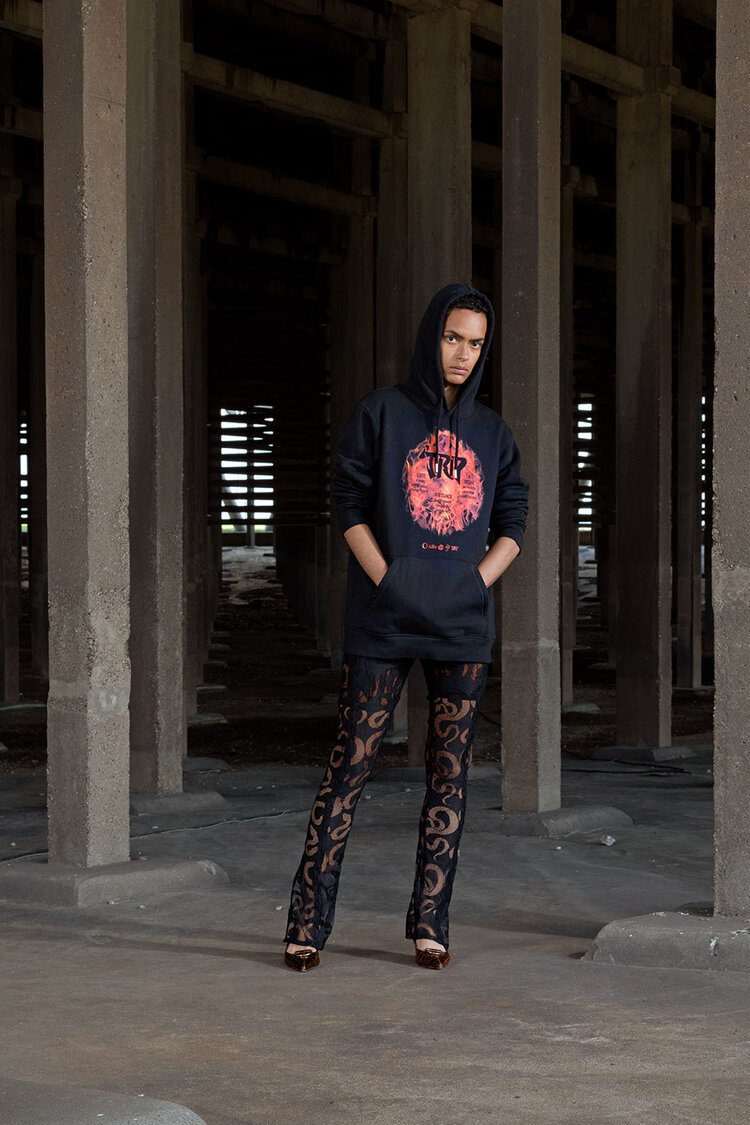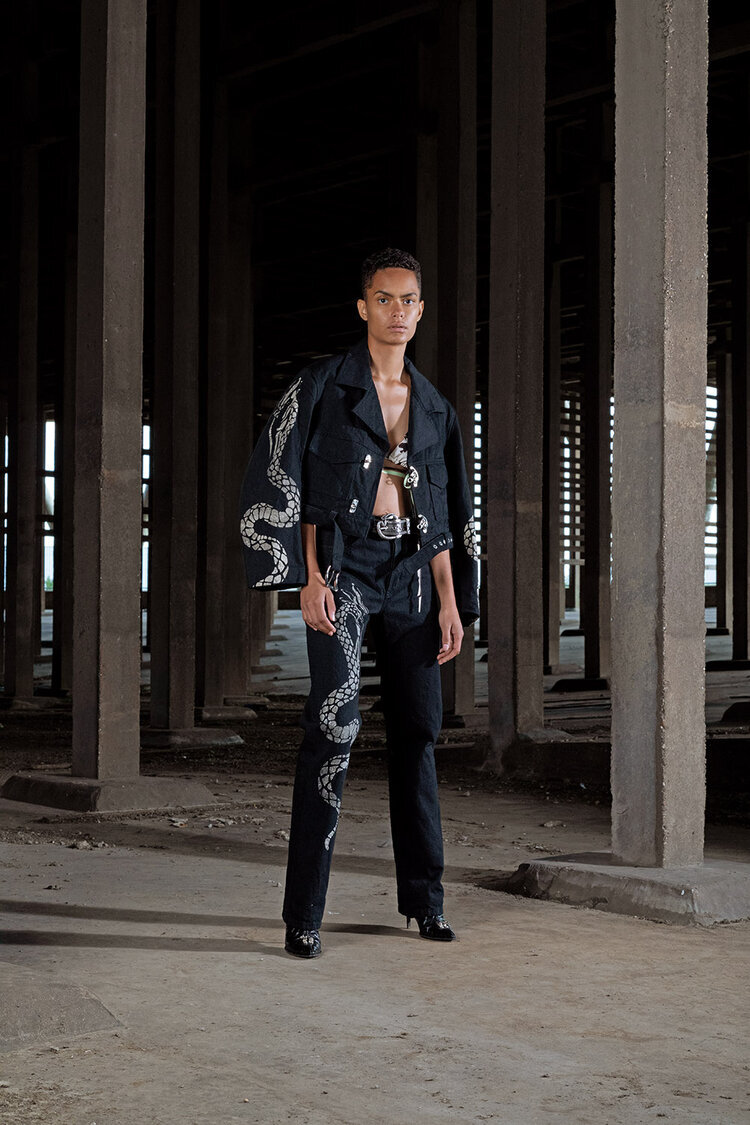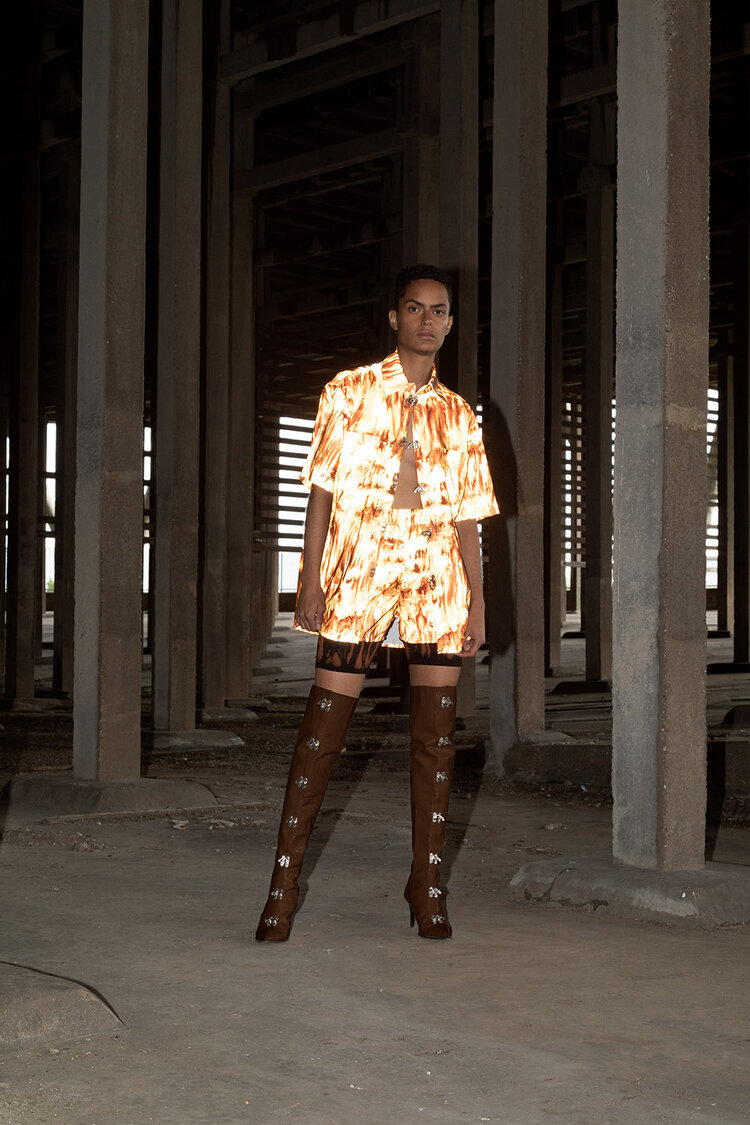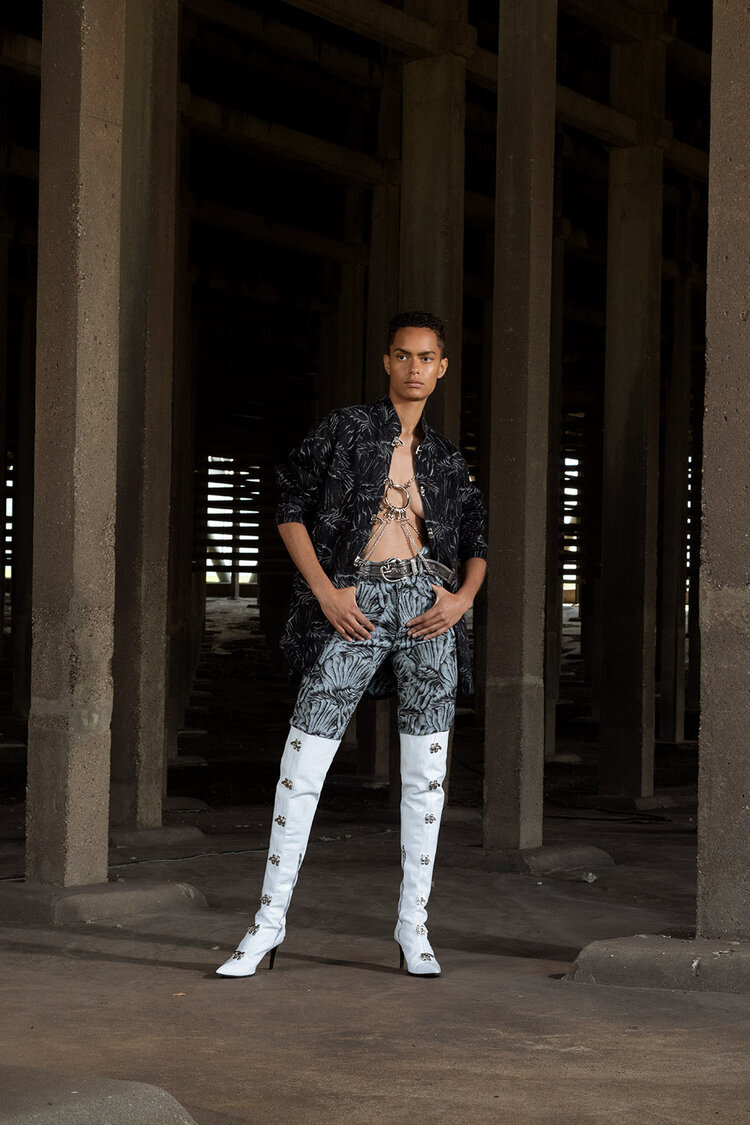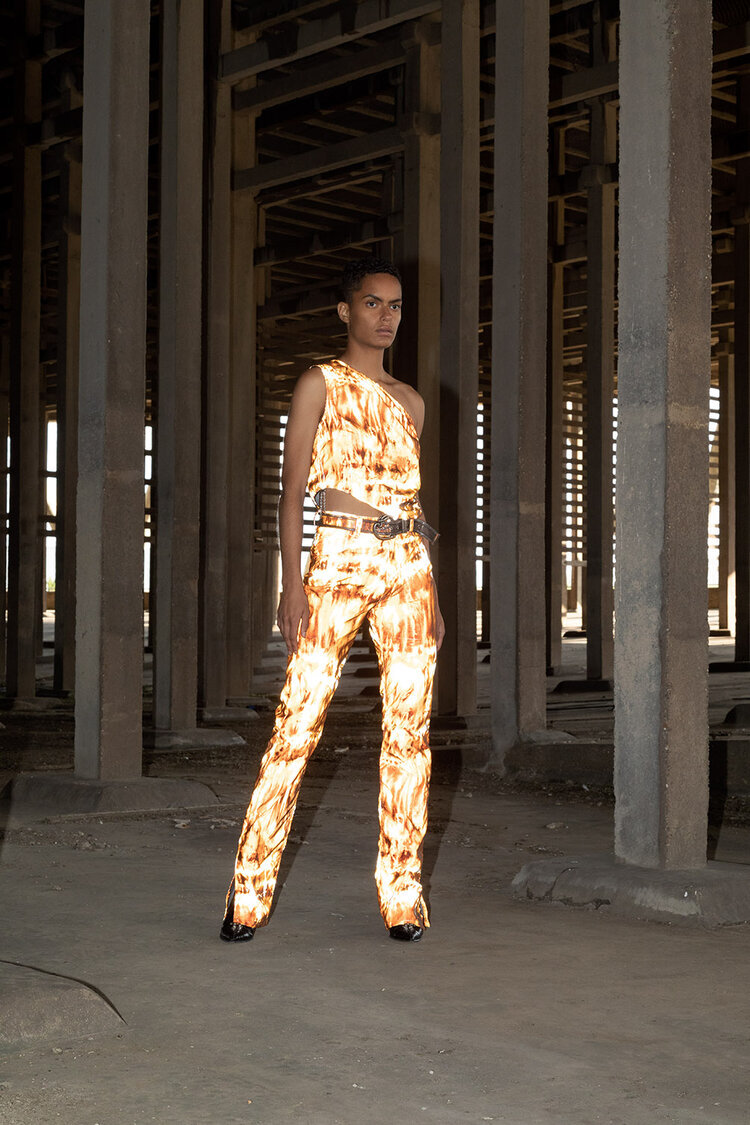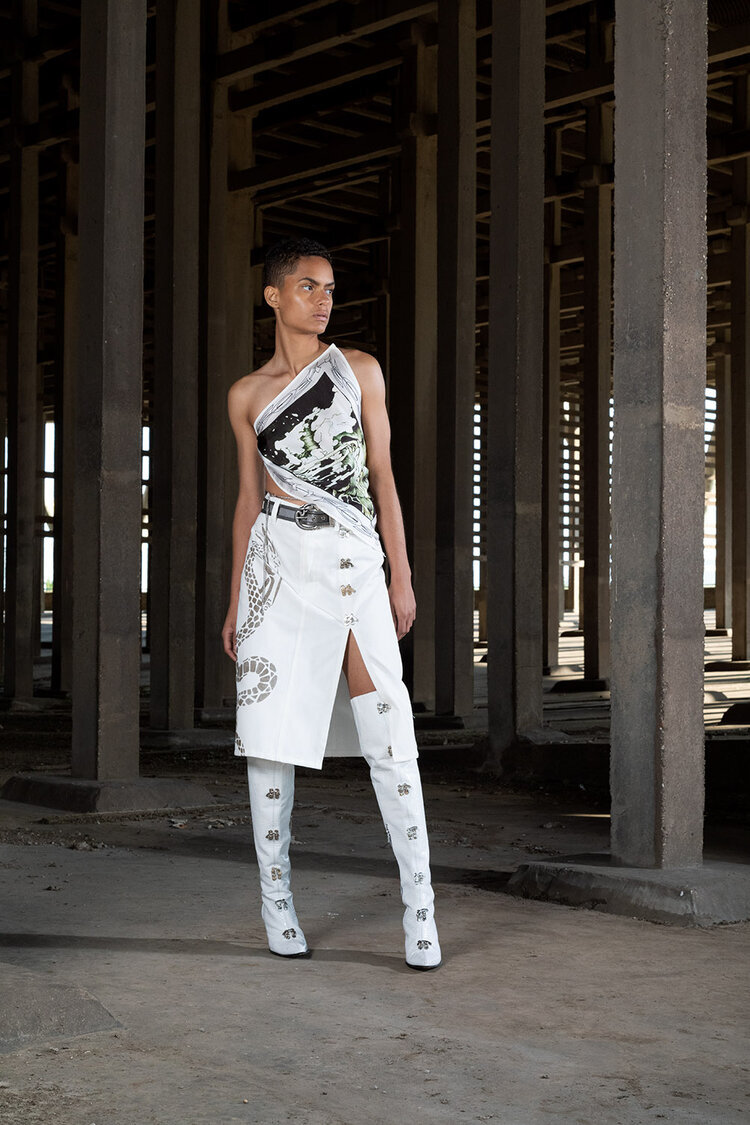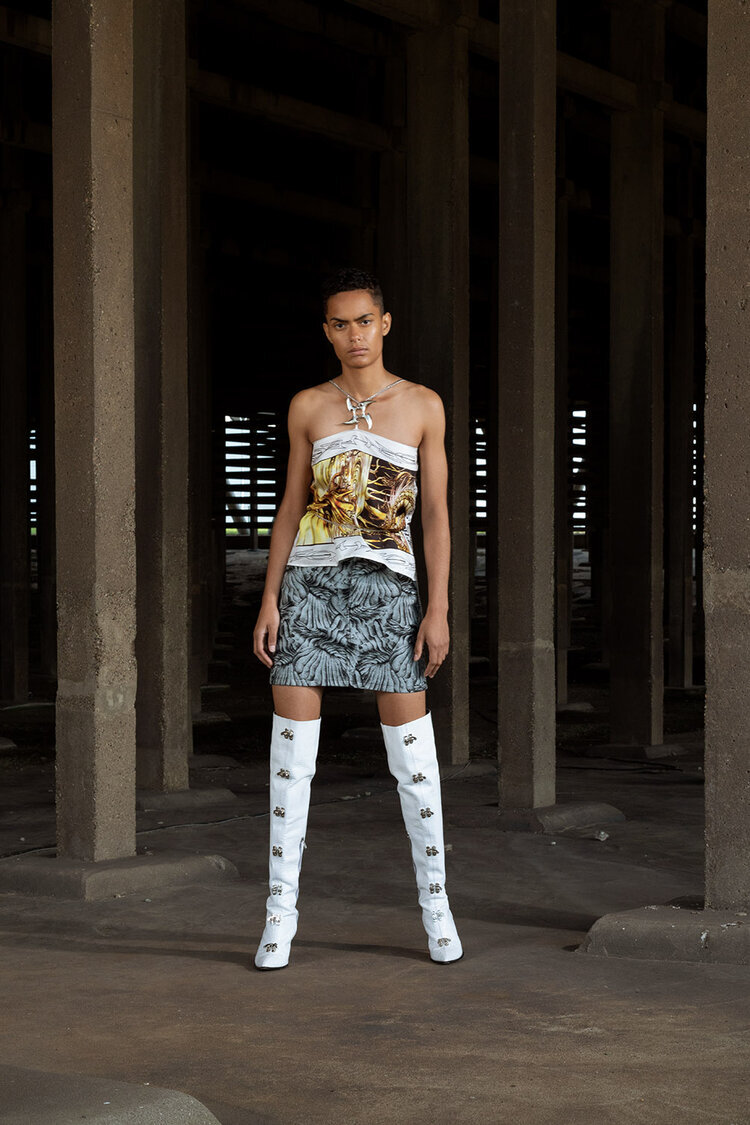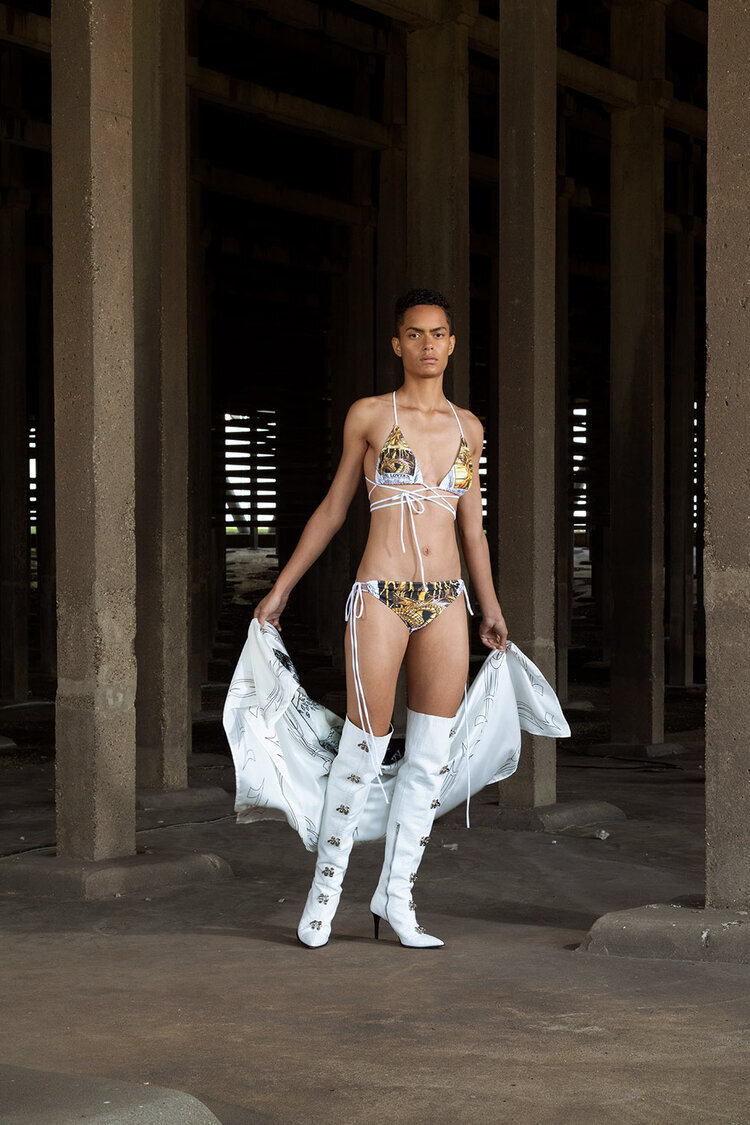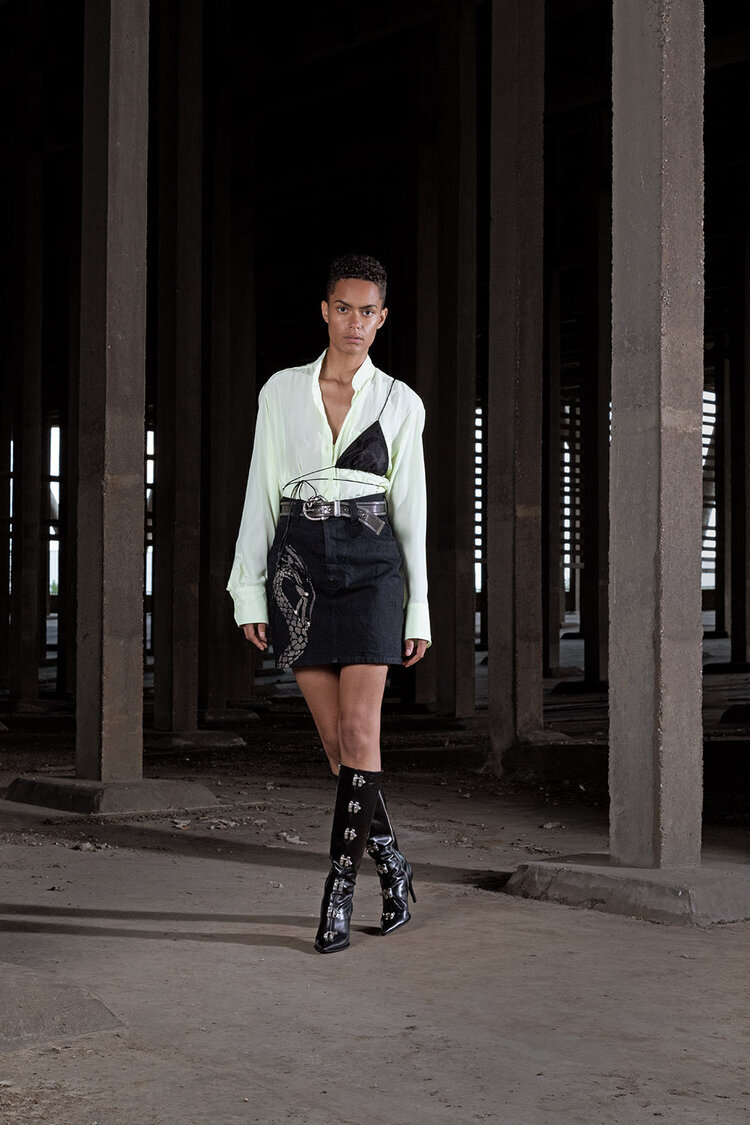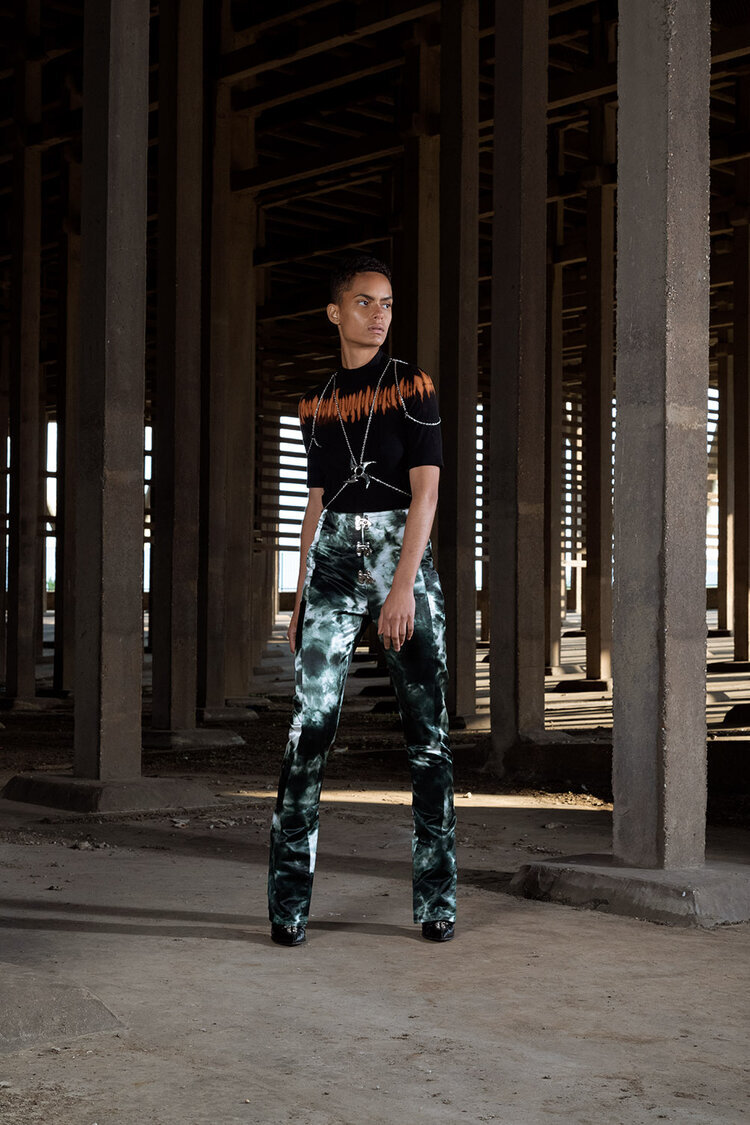Culture Clash: An interview with LĒO.
LĒO is a Belgium-based brand that was established in 2016 by artistic director Leonneke Derksen (Royal Academy of Fine Arts Antwerp, Belgium) and founder Matthias Medaer.
The team met in Paris while gaining experience at fashion houses like Balenciaga and Carven.
This period was the base on which their ideas were born, as they got in touch and ultimately became part of a new generation of young brands in Paris. Moving their studio back to the centre of Europe (Brussels, Belgium) was a natural outcome of the need to fully dedicate themselves to the brand and focus on the quality of their product, which is produced exclusively in Europe.
An amalgamation of vastly different cultures, LĒO has demonstrated since its conception a distinctly unique perspective in the fashion world. The GATA team recently had an opportunity to talk to the LĒO’s team about a wide range of topics spanning from the spiritual influences in some of their past collections, the accelerating speed of the digital world and the change that COVID-19 has brought about in the fashion industry as whole.
GATA: What common ideas or values do you all share? Is there a combined vision that you have for LĒO?
LĒO: We’re really drawn to contradictions: situations or images where there is some sort of tension or a clash of vibes. We believe in quality and originality first. Our garments are carefully placed in worlds in which the brand expresses an original take on "reality” and its movements. LĒO garments oppose seriousness with spontaneity and question common rules with creativity and curiousness. There is a huge appreciation for sophistication and uniqueness.
Distinguished shapes turn through worked-out bleaching and dying techniques into one of a kind garments for a one of a kind wearer. LĒO embraces the awkwardness and accentuates its inherent potential for innovation which can be recognised in the choice of material and recurrent elements like metal details. Each collection is a mix of unexpected and iconic elements with a touch of "no rule“ humour. This fuse contains on one side traditional tailored or classic technical elements that breathe rationality and on the other side the elements of surprise, instinct and emotion.
GATA: Cultural references and religious imagery are prominent in your designs. I noticed psychedelic patterns and the "om“ symbol being used in the makeup for the "TRANCE” collection. Has Japanese spirituality or culture ever been an influence for LĒO?
LĒO: Yes, we really like psychedelic and religious aesthetics and symbols and what they stand for in modern society. For AW19/20 ‘TRANCE’ inspiration was found in both the origin of psychedelic and religious aesthetics as well as its diverse take-on by the mainstream over several decades. For example, Indian symbolism (images of Indian gods and symbols) that was widely used in euro trance and goa music around 2000 on album covers and for commercial party-merge items.
Due to the commercial background of this trend, these symbols were used as a representation of the spiritual rather than the religious and trickled even further down to plastic shopping bags that you will find in touristic places.
AW/ 19-20 ‘TRANCE’
The discourse surrounding the repetitive trickle-down effect within contemporary fashion and society is a continuous source of inspiration.
The trickle-down effect refers to the phenomenon of fashion trends flowing from the upper classes to the lower classes in a society. Similarly, it may also refer to how new consumer products – when first introduced into the market – are especially costly and only affordable by the wealthy, but as a product matures its price will begin to fall so it may be more widely adopted by the general public.
Finally, the trickle-down effect is a phenomenon where an advertisement is rapidly disseminated by word of mouth or by viral marketing. LÉO stays aware of the uncountable sometimes overlapping significations of these diverse references by mixing them up to result in a fresh approach that is specific for the brand’s identity.
We love Japanese culture and symbols. The shuriken/ninja star has become part of one of our recurring collection symbols. You have probably also seen some dragons in our designs ;) we love the spiritual meaning of dragons in Japan, that they are generous, loving forces that use their strength to do good, it’s almost a contradiction, which we love.
“We’re really drawn to contradictions: situations or images where there is some sort of tension, or a clash of vibes. We believe in quality and originality first. ”
GATA: Digital platforms like Instagram are saturated with content. How do you stand out from all the other brands that are vying for attention?
LÉO: Instagram is a new way of showing your brand but its no different than any other form of press content. It has always been like that in fashion, trends come and go, and people who influence that come and go as well. Perhaps it’s not the saturation but more the accelerating speed now that makes people want to stand out even more. Although we acknowledge the value of social media platforms and we’re not trying too much. We just want to show what we do, keep it real and use Instagram as a diary more than a sales platform, as it was initially meant to be used.
It allows us to connect with fans, buyers and potential clients, but also with new friends and collaborators. Mamiko Motto for example reached out when she was in Brussels, now she’s doing all of the music for our shows and videos. Every kind of cultural evolution comes with its advantages and disadvantages, they are always explored but also exploited by capitalism.
Fashion is not any different.
GATA: Instagram has recently incorporated a new shop function to its platform. It seems that people are increasingly moving towards a digital world for both marketing and sales; how do you see the fashion industry evolving in the future?
LĒO: It’s a natural outcome of this global pandemic that people are more active online and this generates a different way of doing sales and marketing strategy. We are pretty sure that this wave that has been set in place (even already before COVID-19) will keep evolving towards finding a broader audience online and using online data to reach goals, but people are also craving to get together again and it will be very interesting to see what happens when digital and real-time will meet again in the future, it will probably give a very interesting crossover of both worlds, we can’t wait!
GATA: I love the variety of different people that wear your clothes from celebrities to musicians. What kind of person do you imagine wears a design by LĒO?
LĒO: There is not one "LĒO-girl or boy” like a muse living in a certain city that looks or acts a specific way. For us it’s more about: what kind of experience does a person want to have, how do they want to feel in their clothes?
We had a t-shirt in our last collection "Trip”, depicting the elements "state”, "substance” and "scene” as the necessary ingredients for a true experience. We believe that garments can empower someone but that it also works the other way around. You need to see garments on people otherwise they’re not alive. This connection between garment and person is a very important element when we design. You need to feel something when you wear LĒO.
GATA: We are still in the midst of a global pandemic and they say that crisis is the mother of innovation; are there any ways that you have changed your approach as a result of COVID-19?
Are there any lessons or positives that we can take from this situation?
LĒO: At first it was shocking and scary. Our fear mostly went out to our collaborators like shops. The thing with fashion is, it’s such a far-reaching and long-stretched working chain. If there is somewhere along the chain with an issue, everyone suffers. And COVID-19 didn’t really help with keeping this chain healthy and working well.
Luckily, our sales didn’t drop that much for now, our clients continue to support us. But we never put our heads down and sit and wait, we tried to approach these uncertain times as an opportunity to look into new ways of doing things, to explore other ways we hadn’t tried before.
We have to keep going but want to do it in a LĒO kind of way. We have created a collection of masks that can be tried with a face-filter, this new way of "trying on” our clothes wouldn’t have existed without COVID.
We are also presenting our new collection digitally in January, and are evolving to more unisex-minded garments.
“You have probably also seen some dragons in our designs ;) we love the spiritual meaning of dragons in Japan, that they are generous, loving forces that use their strength to do good, it’s almost a contradiction, which we love. ”
GATA: What aspects of the fashion industry do you enjoy the most? The shows, presentations, designing; what is it that motivates you all to keep creating at LĒO?
LĒO: We love doing presentations and shows as they are kind of the celebration of our work, but unfortunately we have to do without them at the moment.
We believe that the interaction with people and with places and how garments play a role in this inspires us still the most today. Getting together with other creatives is pushing us further to keep on creating.
Of course, we also love the design process and we also love seeing people perform in our clothes and how they are translating/integrating our story into theirs.
GATA: You’ve stated in prior interviews that you all moved away from Paris because everybody was turning in the same circles. I was wondering if you could elaborate a little as to what you meant by that.
LĒO: That wasn’t really the reason why we left, we actually wanted to be more central in Europe and be closer to our production process.
But yes it is true that when we worked in Paris we felt a common feeling amongst our friends of disappointment almost. People were also surprised that the fashion industry was working in a certain way.
A lot of creative houses would do research in the same libraries, museums and magazines and therefore also pick up on the same things. For an industry that pushes you to constantly seek originality, it all just felt a bit old and an outdated way of doing things. So the idea of stepping out and creating our own thing was definitely on our minds.
GATA: Leonneke, you studied at the Royal Academy of Fine Arts Antwerp, which disciplines or aspects of fine art did you enjoy learning about in your time there?
LĒO: The Antwerp Academy really shapes you as a designer and as a person.
What I really appreciated was the freedom that was given to create, everything was possible, no limits. It was an honour to be part of this education where so many genius people had past before me. I actually really liked the theory classes a lot, especially art history by Johan Pas, it was very interesting to see fashion from another angle and learning about other disciplines at the same time when you create, it shaped my process a lot.
SS/20 ‘TRIP’
“We believe that garments can empower someone but that it also works the other way around. ”
GATA: I read on your website that the brand wants to combine eras...subcultures regardless of codes.
Also, you stated that you wanted LĒO garments to question common rules with creativity and curiousness.
In today’s society, which rules do you think need to be questioned the most?
LĒO: That’s a very relevant question. There are many rules to be questioned, especially right now. Everybody is certainly questioning the rules that our governments are putting out there concerning the global pandemic. Every country has its own guidelines and there doesn’t seem to be any logic or common way of handling this. Economic, political and social rules are more connected and are more contradicting than ever before as well.
We are living in stormy times and we think it’s important to question in what way we should stick to the rules and also how we can overcome these difficult times together.
GATA: Here at GATA we have a strong love for cinema as an art form if you could have any actor/director wear an item from LĒO, who would you choose?
LĒO: Ohhh there are so many, we can’t choose ;) we really would like to dress Sasha Lane, for example, she has such a cool attitude! Or if we could go back in time, Christina Ricci in Buffalo ’66...
We are very excited to officially start dressing our male fans with our new unisex collection as well... How about designing a ‘digital’ look for a character from Kazuhisa Takenouchi’s Interstella 5555? ;)

